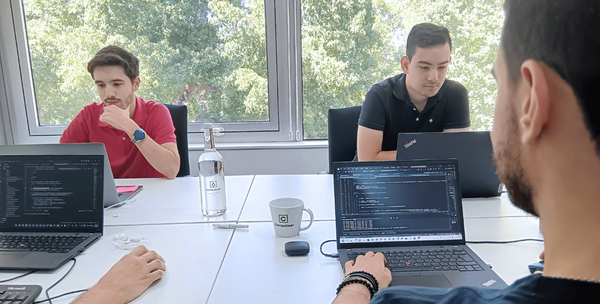MVP - From Idea to Success

Everyone has great ideas. Or, at least, they think they do. That's how many startups are born. Yet, 20% of them fail within the first year, while 34% of them close during the first two years.
There are many reasons why startups fail. Many of them have a great idea and invest thousands of dollars into executing it, only to find out that the public didn't need an app like that after all. In fact, 42% fail because the market didn't need their product, and 29% fail because they run out of resources.
An MVP can save you a lot of time and money when it comes to executing your idea. Instead of conducting expensive and long-lasting market research, you create a set of your critical functionalities to see how users will adopt them.
Why do I need to develop an MVP?
The MVP should answer the question: "Does my target market like my product?" This way, you'll invest the minimal effort to collect the largest amount of knowledge about your target user behavior.
"The lesson of the MVP is that any additional work beyond what was required to start learning is waste, no matter how important it might have seemed at the time."
― Eric Ries, The Lean Startup
When it comes to mobile app development, an MVP is a basic version of an app. It contains the core functionalities and the most significant features to check the reaction of the target market. Then, after some tests, the final product design is based on input from early adopters.
Building an MVP offers many benefits:
- A quick launch
- A small budget
- An opportunity to test early
- Putting more focus on the app's core functions
- Iterations based on users' feedback
- Finding the right audience
- Market validation from your target audience
- Saving time on features that might end up being unnecessary
- Minimizing errors
The stages of MVP development
Where to start?
Before starting to develop an MVP, you need to prepare with some research and planning activities.
Identify your target audience
Who are your customers? What problems are they facing? What are their needs? You need to answer these questions at the very beginning. This will help you create the user experience they need. Moreover, this information represents the basis of the assumptions you are going to test with your MVP.
Analyze existing solutions
Try to estimate the size of the market you're targeting. Furthermore, you have to analyze the products and activities of your competition. Identify their weak spots and try to cover them in your product.
Find a tech partner
Selecting the best tech partner to help you in the MVP development process seriously increases your odds of success. A tech partner can also help you in other business activities like raising investments by providing a robust technical solution.
You shouldn't perceive your tech partner as just a few people who will do coding for you. Having a tech partner means having a team of experienced and highly-skilled experts. They will help you along the entire process—from design to after-launch support.
Design and planning
A user-centric approach
Look at your app through your users' eyes. Try to make every step user-centric, starting with the app opening, to the final action the user should take, like a purchase. Create a flow that will smoothly guide the user through your app.
To do this, you should define the final action your user is expected to complete in your app. All previous actions within the flow should lead to it.
Your tech partner can be a great support in this step. This is a team that has plenty of experience in creating digital products from scratch. Their UX design team can help you design an app that provides exact answers to the needs of your users.
Define the features and estimate costs
Focus on simpler activities more than complex features like searching for products or order management. Those are the objectives your users will have when using your app. Once all these phases of the process are set out, it is time to list the features of each step.
After creating a list of the features, prioritize the most critical features and identify the high priority ones. These are the features you should focus on when you want to develop an MVP. You will include the rest of the elements for your end-product after you complete the testing phase.
Once you have the features defined, you and your tech partner will easily be able to estimate the costs of your app. This will be of great help in your further planning process.
Development
This is when your tech partner takes over. A team of designers and developers work to take the MVP into production from the design-and-prototyping process. If you designed a precise MVP in the previous stage, the developers would only have to implement the design concept into code.
Although the production aspect mostly depends on developers, there will also be a range of operations you may need to engage in. Finalizing the functionality of the MVP and offering input after each sprint will be tasks you'll have to get involved in.
Interaction and accountability are the factors that will have the most significant impact on the results of your MVP project. That's why it's critical that your development partner leverages agile practices in its processes, nourishing a strong relationship with you as a client.
What happens after the launch?
There are still many activities left for you to complete after the launch of your MVP. They have the goal to increase the chances of your MVP success and craft your final product according to your users' needs.
- Promote your app to get to as many early adopters as possible.
- Find a way to connect their feedback to prepare for the development of your end-product.
- Follow user behavior to discover potential bugs and fix them immediately.
- Measure values such as the number of signups, active users, and paying customers, as well as the customer acquisition costs.
- Now that your product is live, you can gain the interest of potential investors by showing them a strong technical solution.
These activities will highlight the weak points of your app and ensure market validation. After this phase is over, you should have a list of fresh ideas that will craft your product's final version. Keep testing, measuring, and learning from your users' feedback until you are confident that you've discovered what they want.
Want to start with your MVP?
Human. Technology. Together.
next - stories


